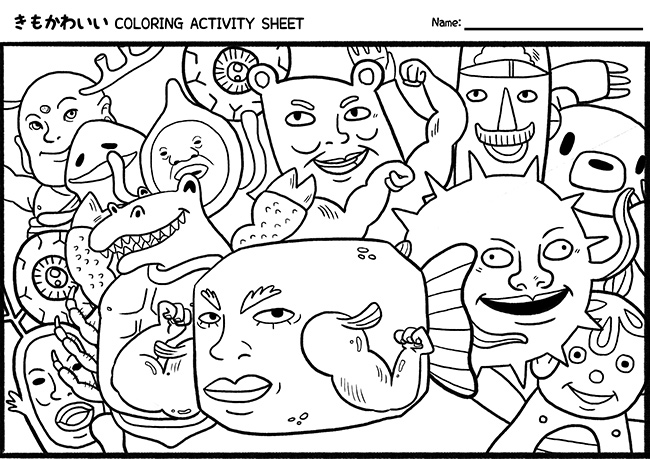There's no doubt there are an abundance of cute characters in Japan. Japanese people love cute things, and will buy mountains merchandise to show off in their homes, use as supplies, or hang them as keychains to dangle from their phones or bags. And because there are so many characters and fads that come in and out of style, one can pick their favorites to show off their interests and personality in an individuality-through-conformity based society like Japan's.
You already know what I'm talking about: Hello Kitty, Pikachu, Rilakkuma, and Doraemon (to name a few). They are, after all, the characters that have made Japan the "Nation Of Cute." While these characters are definitely "the mainstream" (so much so that even outside of Japan you probably will recognize them all), there is another group of "cute" characters out there that you probably have not heard of. Does Kobitodukan, Lerch-san, or Gloomy Bear ring any bells?
Kimochi Warui + Kawaii = KimoKawaii
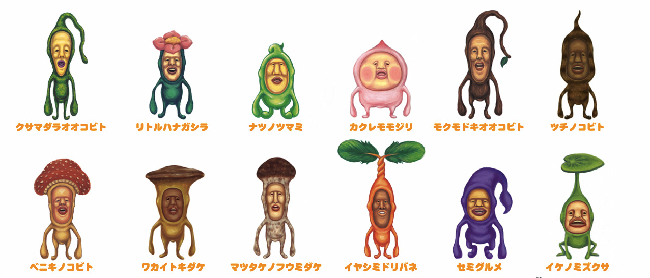
When I was in Japan last summer, I noticed some really strange characters mixed in with the usual flurry of fluffy alpacas and Pokemon. These strange creatures had the outside skins of mushrooms, peaches, and plants, but on the inside they looked like old men in a perpetual state of shock. When I asked my friend about them, she replied that they were called Kobitodukan (こびとづかん) and were really popular, especially among high school girls who think that they're cute
Cute? Cute?! How can something this strange be considered cute, I thought. "They're supposed to be gross, and that's what makes them cute. It's called kimo-kawaii, or gross-cute," my friend explained.

At first I was bewildered by the concept, but just as it took me three painful tries to go from hating the fermented soybean dish natto to loving it, the more that I saw Kobitodukan, the more I began to tolerate them. Before I knew it, I had a Kobitodukan pencil case, keychain, card game, guidebook, candy holder, and assorted stickers. Kimo-kawaii had won me over just like it had won over the rest of Japan.
Kobitodukan themselves were created by Toshitaka Nabata in his children's picture book, Kobitodukan (which translates roughly to "dwarf encyclopedia"). These Kobito dwarves are explained in a poetic fashion, saying that:
"They are the ones who perform the actions that fill us with mystery. They are the ones that make the grass rustle when there is no wind and who fold the edges of toilet paper into triangles."
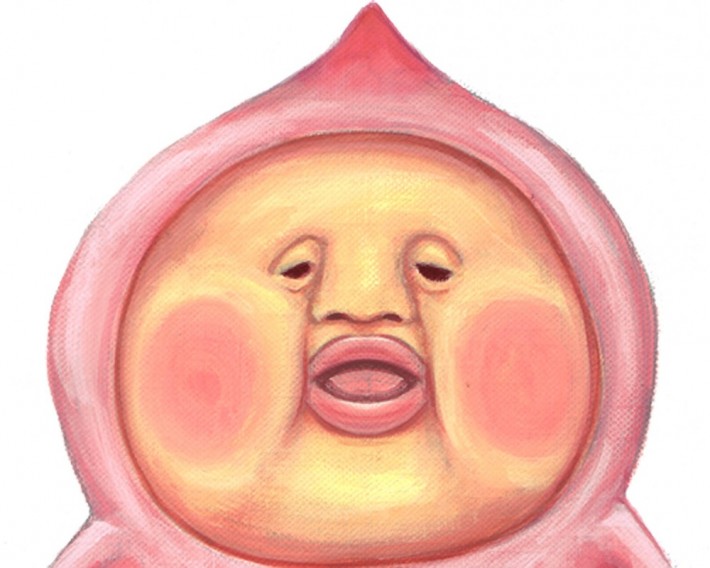
But it's not just the Kobitodukan that are considered kimo-kawaii. There's a whole slurry of other characters out there that fall within this increasingly popular category.
Nameko – He's A "Fun Guy!"
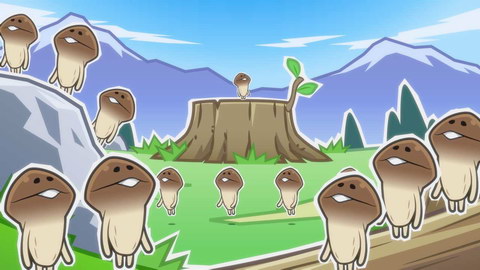
Have you ever heard of a mushroom acting as a detective's assistant? Nameko (marketed in English as "Funghi"), a talking mushroom, started off in a video game and now embellishes many apps, keychains, and folders galore. In fact, you can hardly walk a block in Japan without walking into a Nameko UFO catcher (most likely Viet will be cursing while putting in another 1000 yen into the machine… "last time… last time…" he'll mutter under his breath).
Funghi's official website says "His lovable expressions and unpredictable behavior make him super popular!" If a talking mushroom wasn't kimochi warui enough, his skin is described as "slippery, soft, and shiny" and instead of talking, he can express emotions by saying "nnf nnf"
He even has a whole music video about him! There's nothing like watching a mushroom sing and dance to a catchy tune!
Kimo-Kawaii City Mascots
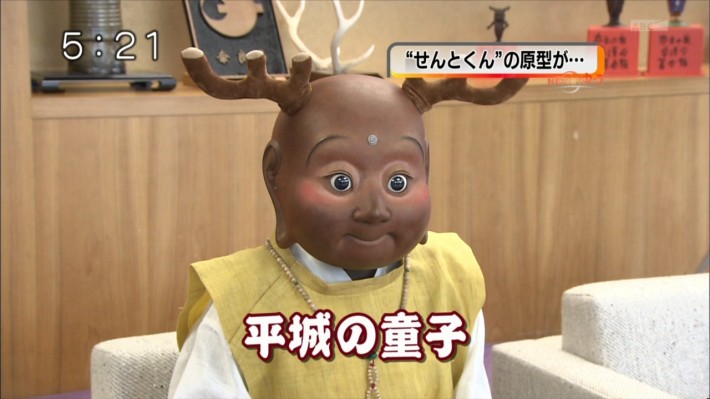
If you're traveling in Japan, you'll see plenty of mascots, and not just for sports teams. In Japan, many cities have their own own mascots, or yuru kyara. There are so many (over a thousand) that they cover a wide spectrum of cute. A while back, Hashi wrote an article about his favorite mascots, which includes some that are kimo-kawaii (or maybe just kimoi) enough to be mentioned here.
Manbe-kun

Manbe-kun is the mascot for the town of Oshamanbe located in Hokkaido. His physical mix of sea-creatures that make up his body and his silent disposition combine to make something that's just plain weird.
Funasshi
Funashi represents Funabashi city and vaguely resembles a pear. Although he doesn't seem very gross standing by himself, when he jumps around (which is very often) you can understand why he might fit into this category.
Sento-kun
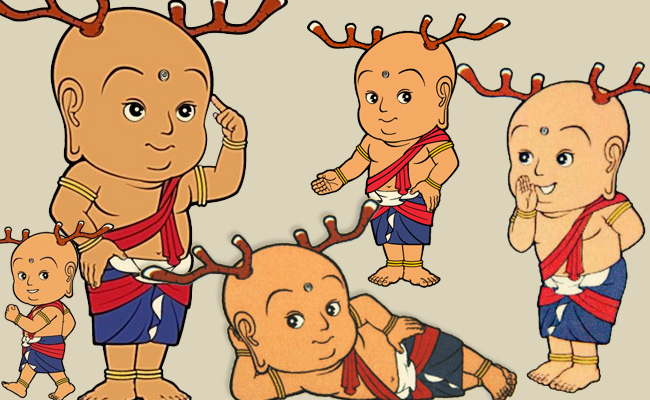
Nara's city mascot, Sento-kun represents his town through his Buddhist monk appearance, reindeer horns and "amiable disposition." He has not been completely well-received throughout his life, but has continued to thrive due to that those who love him, really love him.
Lerch-san
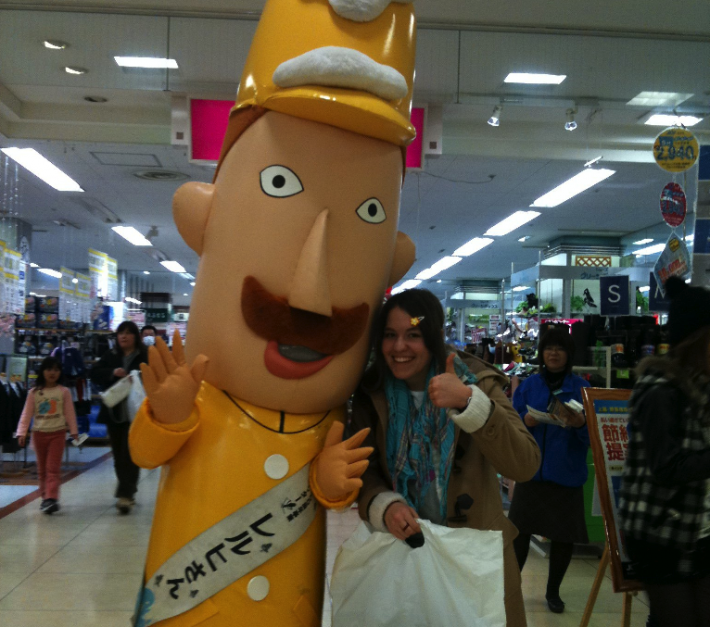
Lerch-san (pronounced reruhi-san) represents the snowy areas of Niigata prefecture, and is in fact based off of real-life guy Theodor Edler von Lerch, who supposedly first brought skiing to Japan. I had the pleasure of meeting the mascot at a shopping center a few years ago. (Kimo-)Kawaii!
Blood and Guts- Grotesque Kawaii
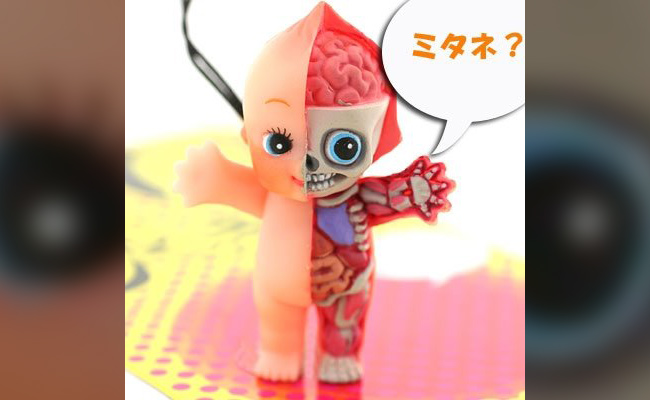
Although kimo-kawaii has been a recent fad, Japan has always had a relationship with creating strange things. Similar to the kimo-kawaii is the grotesque-cute or "guro-kawaii", which is a step more extreme. Those who know Gloomy Bear know guro-kawaii. Gloomy Bear, which has had a surge of popularity overseas, is a teddy bear character who brutally murders his child owner- but he's so cute while he does it! Although more than a little disturbing, I can see why it would be popular with kids going through a goth-phase. Gloomy bear seems like just the thing embrace if you want to be edgy, but still cute.
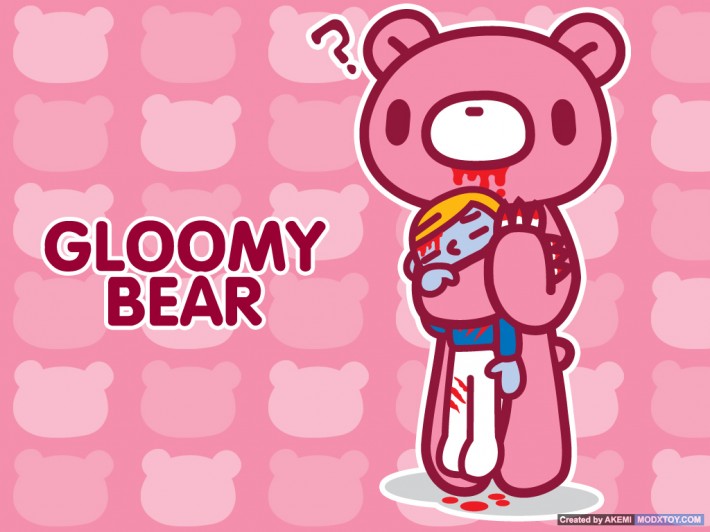
Speaking of edgy, if you "look" around Harajuku (and the rest of Japan) you may "see" something called "eyeball decorations." Japanese girls are ripping out the eyeballs of their friends and are sewing them on their bags and jackets (just kidding.) But eyeballs are embellishing many fashion accessories, and are considered cute by many. Accompanying the eyeballs can be bones or other blood-splattered body parts parts. Adorable!
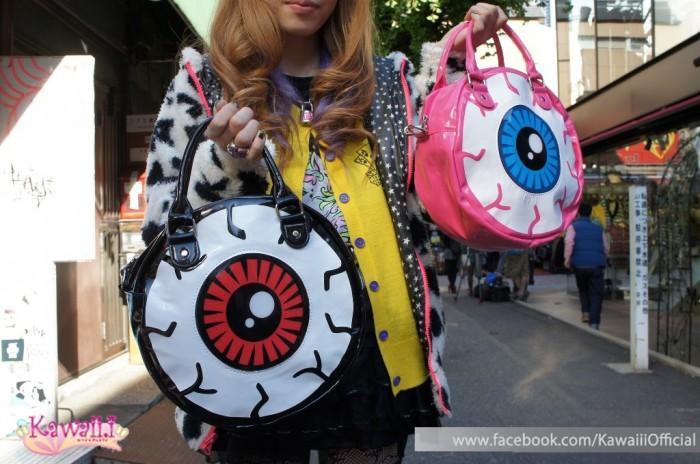
While this sort of fashion can be seen in Japan it also exists overseas, even in America, in fact! A lot of times it seems like there's some inspiration going on, one way or another.
Guro-Kawaii Outside Of Japan?
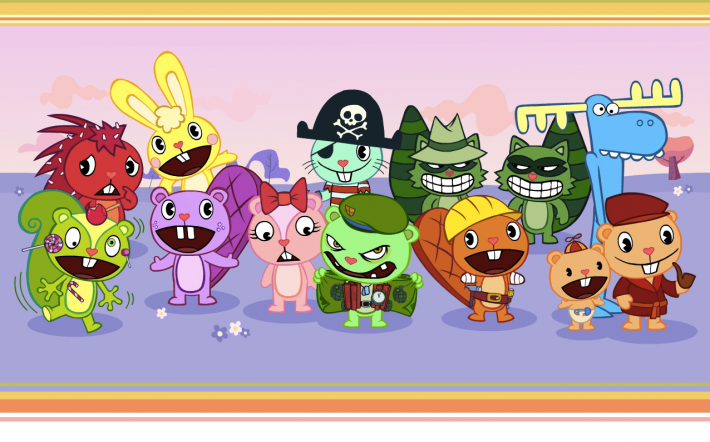
Take for example the American animation Happy Tree Friends, which if you do not know, is a cartoon where cute fluffy animals inflict horrifying levels of violence and gore upon each other. It's not Japanese, but I have heard various Japanese high school girls tell me that they love the show. Why? I honestly do not know. Personally, I can't watch a whole video without cringing and looking away. Seriously, watch at your own discretion. Meccha kawaii~!
The idea of something being both aesthetically unpleasing yet cute at the same time is being accepted both in Japan and outside of it, whether it is for shock factor or for remembrance, and shows around the English-speaking world have also used bursts of gross and grotesque in the mainstream. (Spongebob or Ren and Stimpy, anyone?)
Guro and Kimo Kawaii in the flesh

If we're going to talk about guro-kawaii, we have to talk about her. Kyary Pamyu Pamyu, the supreme overlord of Harajuku, is responsible for earworms such as PONPONPON, Candy Candy, and Tsukematsukeru, definitely embraces the concepts of kimo-kawaii and guro-kawaii.
Kyary is responsible for many strange (often kimo/guro-kawaii) fads, the perpetuation of eyeball fashions ("see" above), as well as a recent fashion idea of using makeup to emphasize the bags under your eyes to make them look bigger- which is strange to some and cute to others.
Kyary herself states that her image is one of the main focuses of her musical career. She said in an interview once that "I love grotesque things. My concept is scary things that become traumatic with their cuteness. There are so many "just cute" things in the world, so I add grotesque, scary and even shocking materials like eyeballs and brains to balance out the cuteness."
Almost Zen like with that balance. Wash on… wash off… Ommmmm.
But… Why?
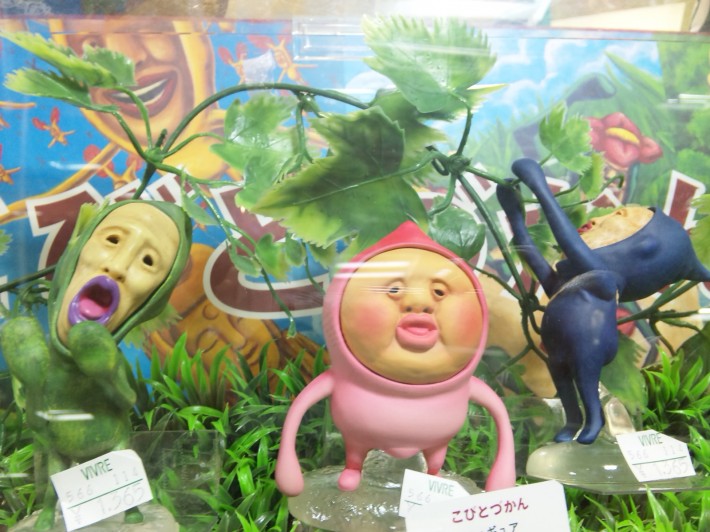
So why are Kobitodukan, eyeball accessories, and Kyary so popular? Is it the Japanese love of the strange in a society where most are not strange? Are people getting bored of the traditional soft vanilla-type Sanrio cute? The strange is what initially shocks the consumer, and is more interesting than the plain cute. And once they get past the initial shock, they become more open to the idea of it being "cute", especially when the media and their peers are also calling these things cute. Japanese society is what gives these things the names "kimo-kawaii" and "guro-kawaii", and once a name is given, the concept comes along with it.
So go forth, Japanese schoolgirls! Bring more kimo-guro-kawaii into the world for the rest of us to enjoy! We will continue your legend by calling these things cute as well, though maybe it'll take a little getting used to. Although guro-kawaii has been accepted more outside of Japan with things such as Happy Tree Friends, kimo-kawaii still has a ways to go, I think, as I am reminded almost daily when people see my Kobito keychain. "What the hell is that?" or "That's kind of creepy," are things I hear a lot. I'm sure the more that I tell people that my kakuremomojiri Kobitodukan keychain is cute, the more it will rub off on someone at some point.
So let's see, did it work? Let me know how you're feeling about all of this on Twitter. Beauty is in the eye of the beholder? (That is, unless said eye is on your handbag)
Time To Coloring Book!
For those of you who still love coloring books (or have kids) our (not) kimo-kawaii artist Aya made you a coloring book page out of the header. How fun is that?

